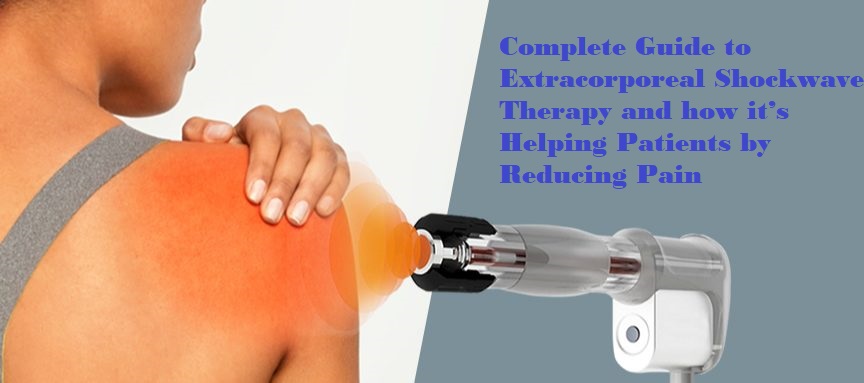Extracorporeal shockwave therapy (ESWT) is an evidence-based regeneration technique with origins in the treatment of kidney stones but has since expanded to include a wide range of therapeutic use cases. Learn about the evolution of ESWT and how it became a super star in the field of pain management, mobility problems, and injury rehabilitation.
Modern life is almost entirely influenced by technological advancements, which frequently render traditional methods of doing things outdated. Regenerative technologies are gaining popularity as effective alternatives to medications and surgery for treating musculoskeletal pain and dysfunction.
Don’t Worry!
We are here to recommend to you the best medical facility that uses extracorporeal shockwave therapy to heal pain. Simply go to the Physiotherapy Surrey clinic to get rid of this condition.
How Extracorporeal Shockwave Therapy Helps to Reduce Pain?
The therapy uses precisely calibrated shockwaves to target your wounded tissue. These shockwaves form microscopic cavitation bubbles in the tissue, which burst to promote blood flow, stem cell activity, and pain-relieving enzymes in the treated region. After therapy, shockwaves are used to relieve pain while also promoting long-term tissue restoration and regeneration.
- A decrease in the discomfort that nerve fibres feel.
- An increase in blood flow to the nearby soft tissues.
- Activation of stem cells to stimulate the healing process.
What Extracorporeal Shockwave Therapy Can Treat?
Acoustic wave treatment or extracorporeal shockwave therapy are excellent for treating musculoskeletal disorders and relieving pain. Shockwave technology is a successful treatment for a damaged area, increasing healthy blood flow, blood vessel creation, and lowering inflammation:
- Knee Ache
- Shoulder pain and shoulder tendonitis
- Hip Ache
- Back and neck pain
- Plantar fibrosis
- Chronic pain and tendinopathy
- Calcium deposits
- Elbow in tennis
- Tendinitis of the Achilles
When is Shockwave Therapy not Appropriate?
Your pain or condition’s suitability for shockwave therapy medication will be determined by the first evaluation. Despite its efficacy in treating a variety of musculoskeletal problems, we do not recommend using it:
- If there is a nerve or circulatory issue.
- If there are infection-related symptoms.
- In regions where there are affected bones.
- If any open wounds exist.
- While pregnant.
- If you take any drugs that thin the blood.
- In the event of serious circulatory issues.
- Intended for kids.
History of Extracorporeal Shockwave Therapy
Scientists started looking into the effects of shockwaves on human tissue in the 1960s and 1970s, and by the mid-1980s, shock waves were being employed as a lithotripsy procedure to break up kidney stones and gallstones. This was the first instance of non-invasive technology being used to treat human tissues.
Shockwave treatment, commonly referred to as extracorporeal shockwave therapy, was initially applied in urologic diseases in 1982. The effectiveness of this technology in treating urinary stones rapidly made it the go-to, noninvasive therapy option. Later, ESWT was studied in orthopaedics, where it was shown that it might cause cement in total hip arthroplasty revisions to loosen. Research has focused on upper and lower extremity tendinopathies, fasciopathies, and soft tissue conditions. In addition, animal studies conducted in the 1980s showed that ESWT could improve fracture healing by enhancing the bone-cement interface, increasing osteogenic response, and improving osteogenic response.
Since roughly 15 years ago, shock wave treatment has been utilised to treat specific musculoskeletal conditions.

